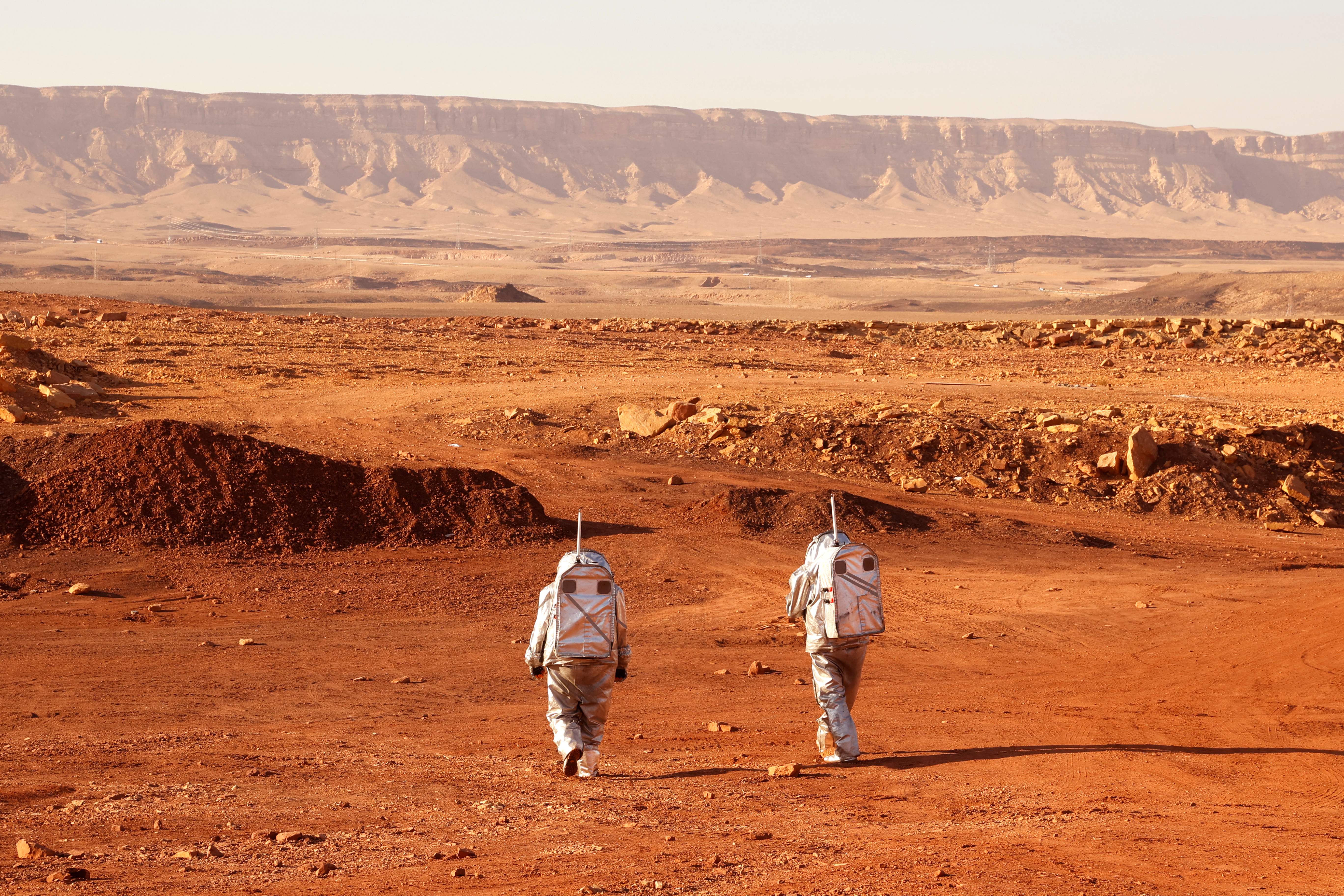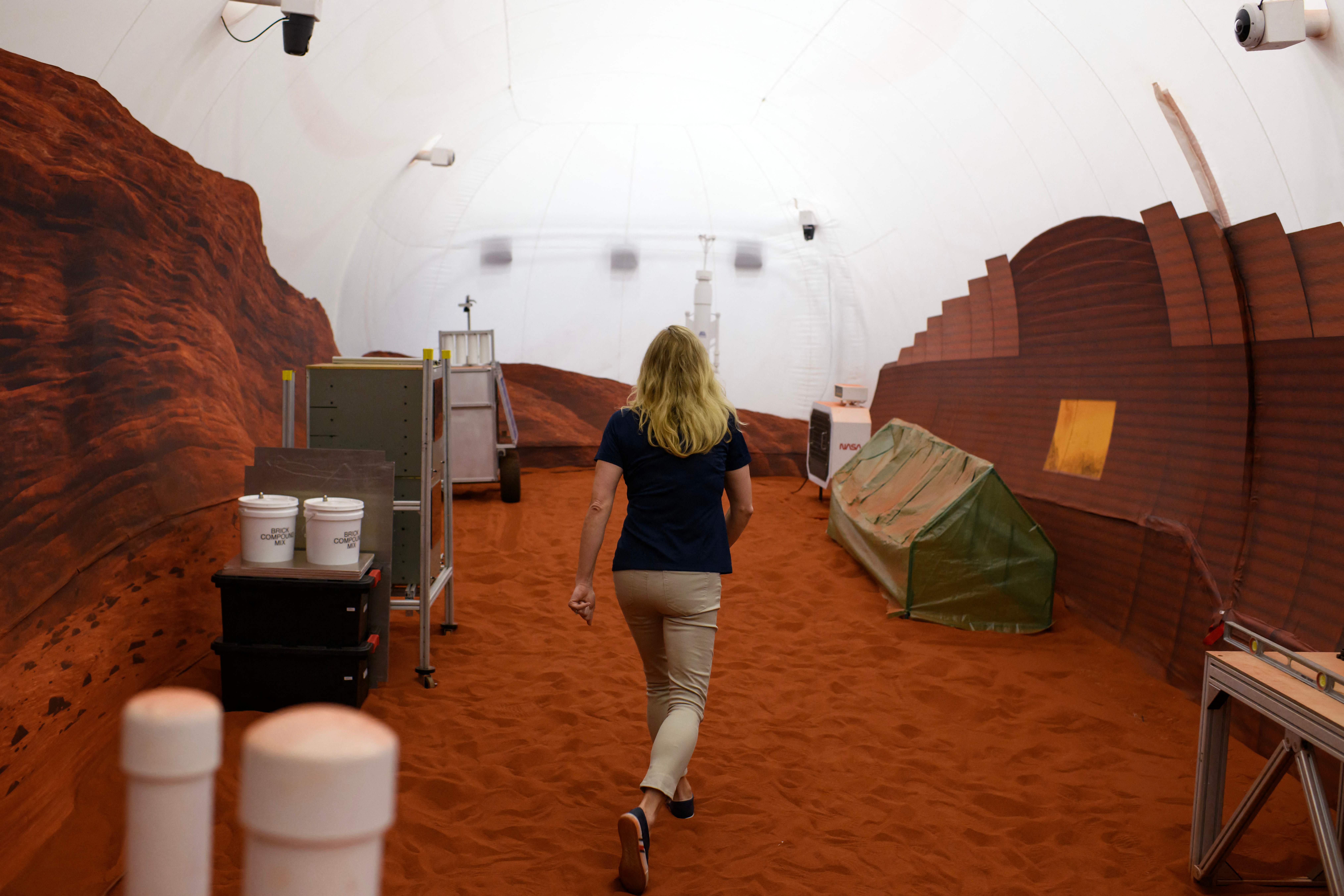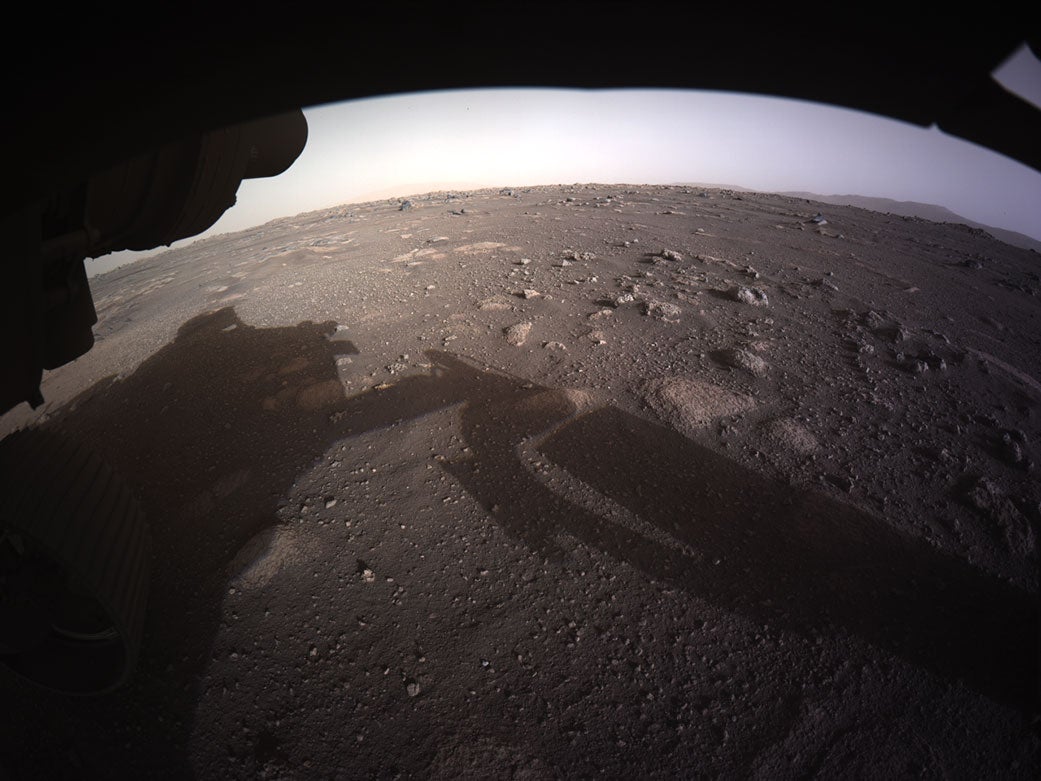Life on Mars: Could we really survive on another planet?
Nasa is on the hunt for recruits to spend a year living in a Mars simulation, writes Andrew Griffin. Do you have what it takes to thrive? And how close are we to sending explorers on the 500-day journey to the Red Planet?


You’ll need to be healthy and motivated, proficient in English and in possession of a master’s degree. Successful applicants for this particular job can’t be smokers and – importantly – will need a “strong desire for unique, rewarding adventures”.
If that sounds like you, there’s a chance you could land one of the most out-of-this-world jobs there is: one of the first people on “Mars”.
Nasa isn’t yet ready to send people to the actual Red Planet. That 500-day, tens-of-millions-of-miles mission isn’t expected until the 2030s – and Nasa has been prone to delays that mean it could easily stretch long past that. It hasn’t actually got a spacecraft that could carry people that far.
Instead, Nasa will send people closer to home: Houston. There, the space agency has created a habitat called “Mars Dune Alpha”, part of its Crew Health and Performance Exploration Analogue (CHAPEA) mission, which is intended to simulate life on Mars.
Those who make it through the selection will enter that habitat – 3D printed, 1,700sqft – for a year of pretending to live on Mars with all the stresses that would bring.
Life on the real version of Mars will not be easy. The planet is shockingly cold; it averages -65C. The surface is blasted with dust storms and radiation. They won’t get much help from home: signals can take 20 minutes to reach Earth, making anything like a phone call impossible, and there is no chance of a rescue mission.

The simulated Mars attempts to recreate some of those difficulties. Communications with the outside world are similarly delayed, and they must mostly eat dried food from packets with limited water. But that is relatively luxurious: the inhabitants are not being scoured by deadly radiation, and get running water.
It is not Nasa’s first trip to this version of Mars. The first CHAPEA crew entered the habitat in June last year and are more than halfway through their mission. The group will spend a year in a replica Martian base that looks akin to a modern but sparse hostel.
The four participants have grown crops and done the kind of science experiments that would be required of any trip. They have even undertaken “Marswalks” onto a simulated version of the Martian surface, which is actually a very large and red sandpit. Scientists are studying how they deal with those challenges, with a view to informing how they get on.

Such experiments haven’t always gone well. In 1991, eight people sealed themselves into Biosphere 2, a closed experiment that aimed to create a complete ecological system, as a kind of sequel to Earth (Biosphere 1). It was a marked failure, most notably for ecological reasons but for psychological ones too. Factions formed and the group became divided and resentful.
There is no real way of knowing how a real Mars crew would cope with their 500-day journey to the planet, stuck together inside a small compartment and only able to rely on each other in the case of an emergency.
But it could run into similar problems. The European Space Agency notes, for instance, that comparable work on remote Antarctic stations and nuclear submarines has shown that teamwork can fail and relationships can break down.
“Interpersonal relationship issues in such a confined micro-society can rapidly lead to uncontrollable and dangerous situations,” it says.

Before humans can even undergo anything like the CHAPEA experiment, they have to actually get to Mars. That is going to be incredibly difficult: the mission is long and requires vast amounts of supplies, especially given that any human mission would presumably want to come home again after it was over. Even putting robotic landers on Mars remains difficult and expensive, let alone people.
Nasa wants to make the journey easier by going to the Moon first, and using that as a stepping stone. Supplies could be taken up to a lunar base, making the job of leaving Earth’s orbit easier. That is the point of Nasa’s ongoing Artemis mission: it hopes that the crewed landing scheduled for 2026 will eventually allow for annual landings that would help establish a Moon base.
In many ways it can feel like we’re further from the Moon – and Mars – than we were even 50 years ago. Nobody has set foot on another celestial body since the Apollo 17 mission in 1972. The Artemis project has been prone to delays, and no other space agency is closer to solving the issue.

In recent years, we’ve seen increased input from the private sector, in the form of Lockheed Martin, Boeing, Airbus and more. Elon Musk has made clear that the ultimate mission of SpaceX – and perhaps his life – is to make Earth interplanetary, and he is regularly pictured in an “Occupy Mars” shirt.
Some of that plan is in motion: Space X’s Starship is currently in testing and is intended to take humans to Mars. Some of it is much further off. Musk has spoken about sending a million people to Mars, using terraforming to make its climate more like Earth, and he has even suggested dropping nuclear weapons at its poles to warm it up.
Those plans have attracted intense criticism. In 2021, astronomer royal Lord Martin Rees criticised Musk’s plans and suggested that the idea of an enjoyable life on the Red Planet might be a dream.
“The only reason for humans to go to space would be for adventure. To live on Mars is not going to be easy. Mars has a hostile environment,” he said then. “[Musk’s idea] to have a million people settle on Mars is a dangerous delusion. Living on Mars is no better than living on the south pole or the tip of Mount Everest.”

But would anybody be able to stop Musk and his plan for a million Martians? The foundational document governing space exploration of this kind is the Outer Space Treaty, introduced in 1967 and now agreed on by every country that is likely to get to space any time soon. It codifies a host of principles that would govern colonisation of Mars and other celestial bodies.
It affirms that “the exploration and use of outer space shall be carried out for the benefit and in the interests of all countries and shall be the province of all mankind” and that it should be free for “exploration and use by all states”. Among other rules, it also requires that states should “avoid harmful contamination of space and celestial bodies” and specifically prohibits nuclear weapons from being put into outer space at all.
In the nearly 60 years since it was signed, that high-minded spirit of peace has largely triumphed: even in the age of the Space Force, and the fight over space junk, nations have largely abided by the rules. But for most of its life, we have not set foot on other worlds, which has made fighting over who owns them something of an academic concern.
Mars remains a distant concern, even as we work hard to get there. But as we get closer to being able to actually travel to the planet, we will have to face a question that has troubled humanity for its whole history: how can we live together, here or elsewhere?





Join our commenting forum
Join thought-provoking conversations, follow other Independent readers and see their replies
Comments